New Years Eve in Japan is a bit different than what you may be used to elsewhere in the world. A more subdued holiday, most people head to their family homes, much more similar to Christmas in the West. You can still find count downs similar to western-style celebrations, but my friends and I like to go the more traditional route.
This year of COVID isolation has made everything a little wonky, and yes, I’m updating this post in the new year! Better late than never but one good thing that came of 2020 is that I’ve been able to update a lot of older blog posts. This year for New years eve in Japan there was much more watching of Kohaku then heading out but here’s to dreaming of the years to come.
- What is New Years eve in Japan called?
- Eat Toshikoshi Soba (年越し蕎麦)
- Watch Kouhaku Uta Gassen (紅白歌合戦)
- Head to the Shrine for Hatsumode (初詣)
- Hear the bells of Joya no kane (除夜の鐘)
- See the first sunrise or Hatsuhinode (初日の出)
- Yes, there are still some western-style Celebrations
- Transportation the Night of New Years eve in Japan
- What are your New Years’ Eve traditions?
[Editor’s Note: This post was originally published in December of 2018 and has been updated for freshness, accuracy, and comprehensiveness.]
Disclosure: Kristenabroad.com is a participant in the Amazon Services LLC Associates Program and other affiliate programs. For some links to products or services in this article, I may earn a small commission by you using my link. The price for you is not affected.
What is New Years eve in Japan called?
In Japanese, New Years eve is called “大晦日” (Ōmisoka). “晦日” (Misoka) refers to the last day of the month and since it’s a big deal swapping years it gets a “大” (long o sound, “big”) on the front. You will also see events for New years eve in Japan simply referred to as “New Year’s Eve” though. Another word for it is “年越し” or “toshikoshi”, which leads to our next point.
New Years day in Japanese, in case you are curious, is called “元日” or ganjitsu. The “New Year” is called お正月 (o-shougatsu, the “o” is an honorific), especially referring to the first three days. While some of this post bleeds over into the first day (as New Years eve is ought to do), I’ll concentrate on the particulars of お正月 some other time.
Eat Toshikoshi Soba (年越し蕎麦)
You start the evening with dinner or a snack of Toshikoshi soba which brings good luck for the following year. Toshikoshi soba (年越し蕎麦) translates as “year-crossing soba”. Soba noodles are supposed to signify a long life because they are long and thin. The tradition is thought to have started several hundred years ago. There is lots of superstition surrounding this meal though.
- Don’t bite them or you’ll cut life short! Though NOT chewing them I think would also lead to a short life as I don’t know how not to choke on them otherwise. I’ve also seen where because they are so easy to break (soba especially made traditionally with only buckwheat is very fragile), you are “breaking free” of the past.
- It is also said to bring stamina due to the fact that buckwheat is a very hearty plant.
- You are supposed to have it early in the evening as after midnight signifies bad luck, since you were supposed to “cut off” the evils of the prior year before then.
Whatever you decide to believe, adding toshikoshi soba to your New Years eve in Japan celebration is a delicious meal and you’ll find soba restaurants all over. But why just Japan? It’s truly a simple meal to make.
Prepare a quick dashi broth from kombu seaweed and dried shitake mushrooms or bonito flakes (katsuobushi), add some mirin and soy sauce and you have the base. Soba noodles can be found in Asian or specialty food stores and take the same amount of time as most long noodles (and no need to do anything special like with ramen noodles). Top with some scallions and maybe a little American wasabi (horseradish – only partially joking as that’s normally what the “wasabi” is in America), and voila!
Oh, and a little bit of shichimi togarashi seasoning (more on that another time) is a tasty accompaniment.
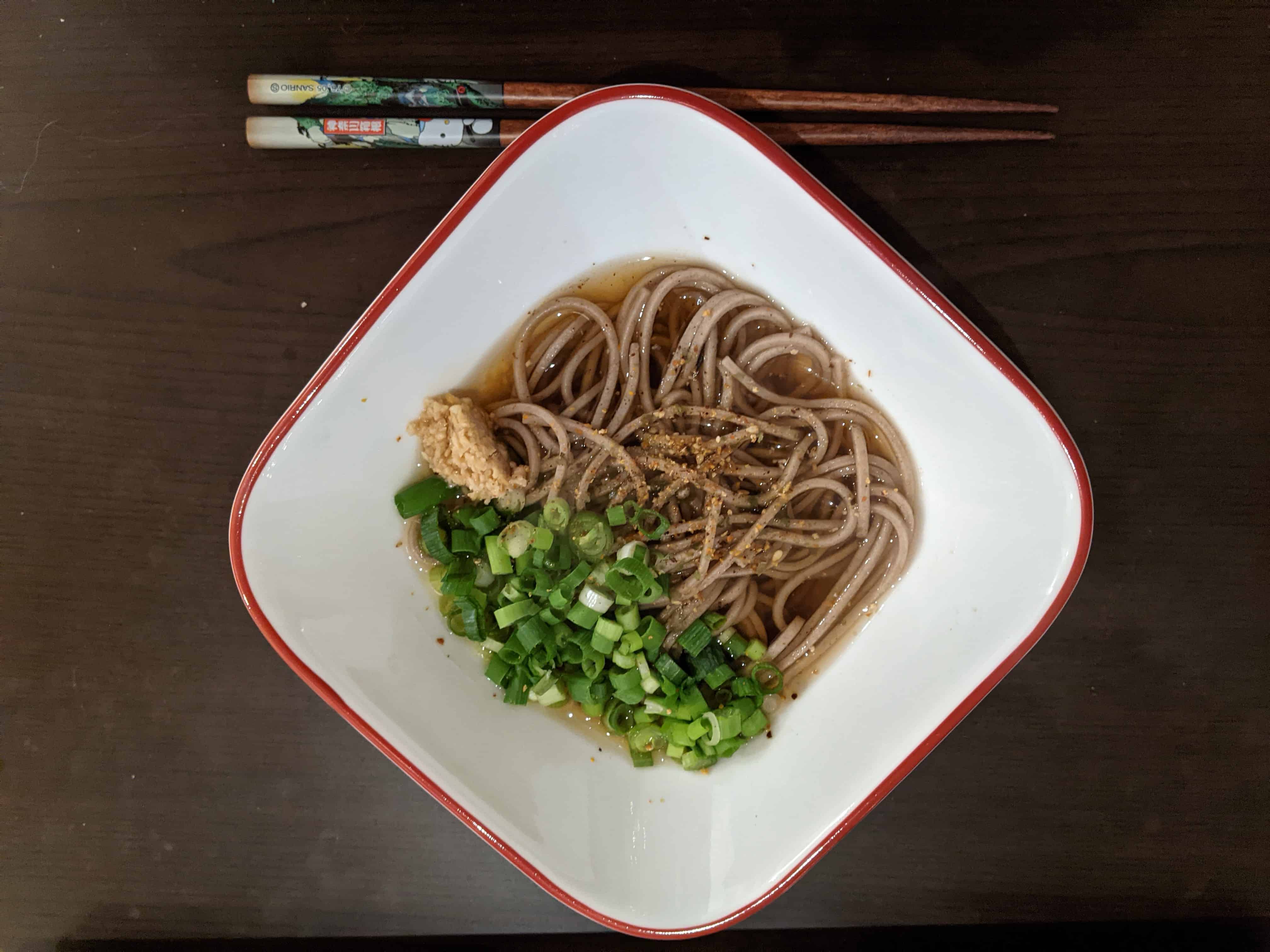
Watch Kouhaku Uta Gassen (紅白歌合戦)
Feel like staying in? What’s New Year’s Eve without a ridiculous television show? Similar to Western count down shows, except heavy on the singing aspect is 紅白歌合戦 (Kouhaku Uta Gassen) or “Red and White Singing Contest”. The Japan Broadcasting Network (otherwise known as NHK) has been running the program since 1951 originally as a radio show and then was moved to TV.
There is a red and white team that compete throughout the evening. Starting around 7 or 8, it runs to exactly 11:45 – room to get to hurry to your next event, Hatsumode.
Head to the Shrine for Hatsumode (初詣)
Next, just before midnight, head to a shrine for Hatsumode (初詣) or the first shrine visit of the year. (Some will go to a Temple instead, see the next topic!) Probably the most popular shrine in Tokyo for Hatsumode is the Meiji shrine (明治神宮). Dedicated to Emporer Meiji (the 15-year old that ruled after the fall of the shogunate) and his wife, it should be on your list of shrines to see anyway. Located next to Harajuku Station, it’s easy to get to but normally (see aforementioned COVID comment) super crowded and you could be waiting for hours with thousands of your new close friends.
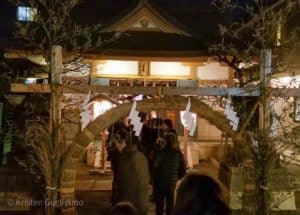
My friends and I like a smaller shrine on the other side of Cat Street called 穏田神社 (Onden Shrine). While the exact date of their existence is unknown, there is reference to the local god of Onden from the Edo period making them around 400 years old. Most of the buildings were lost in the war so they have been rebuilt since but it is a nice little shrine. Why this one though? My friend works practically next door and visits it often!
If you arrive before midnight, there will be a line to wait to pray as the goal is to pray for a good year as soon as possible but not too early!
What is the large hoop of grass at Shinto Shines?
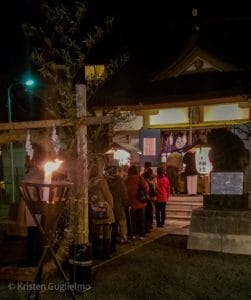
You may have noticed in those pictures what appears like a circle made of straw. This is called a 茅の輪 (chinowa) and you will see them around New Years’ and in the month of June at Shinto shrines. If you do you can take place in the purification ritual called 茅の輪くぐり (chinowa kuguri). You will walk around it in a figure-eight pattern.
- Bow in front, step with your left foot over the ring and head to the left.
- Once around to the front again, bow again and step with your right foot over and head to the right.
- One more time! Bow at the front, step with your left foot and head to the left.
- Back at the front, bow, step with your left and head forward to the shrine to pray.
After praying at Onden Shrine, you are offered a taste of sake in a small plate looking vessel called sakazuki. Sakazuki is a wide-mouthed, flat sake cup. Different from how you will normally see sake served, this style is used in Shinto rituals and ceremonies. Lift the cup with both hands, one on the bottom and one on the side. For a small offering, you can keep the sakazuki as a souvenir. Each year they have the new zodiac animal.
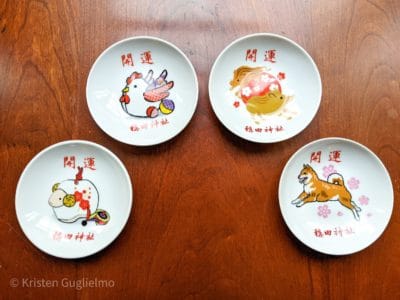
The next thing you will see is the お守り (omamori) for sale. These are amulets or charms for various things and it is common to start the new year off with one. Another reason I love this small shrine is that they make a huge batch of amazaki (甘酒, sweet sake) for all patrons, not to be missed. It’s delicious and served warm it is perfect on cold nights.
Hear the bells of Joya no kane (除夜の鐘)
If you are instead at a Buddhist temple at midnight (Hatsumode can take place at either a shrine or a temple), you can hear them toll the new year in. Get ready to count because the bell will ring 108 times. 108 is ominous in Buddhist and is supposed to signify the 108 human desires.
Luckily, many shrines and temples are near each other so even if you are at a shrine, you can hear the bells. And just to make it more confusing, I’ve seen some shrines with bells as well.
See the first sunrise or Hatsuhinode (初日の出)
It’s a big thing to see the sunrise and again, wish for good luck in the coming year. This is called Hatsuhinode which can be quite literally translated the “the beginning day rising”. Many people will gather on the beaches or tops of the mountains to start their new year off. There are recommended spots put out every year along with forecasts for the morning so you can ensure to actually see the sun.
In the capital, Mount Takao is a favorite as well as Tokyo Tower, which opens the observation deck at 6 am for New Years Day. Tokyo Sky Tree (which honestly I like better than Tokyo Tower as far as observation decks go) holds a lottery (again, normally. This year hasn’t been normal) every year to get a spot to see from there. Another good spot is the observation deck at Haneda Airport with its unobstructed view across Tokyo Bay to Chiba prefecture. They also (normally) open earlier than usual for the event.
Yes, there are still some western-style Celebrations
If you want a good old fashioned ball drop, there are plenty of pubs that will have a more “western” celebration with paper fireworks and silly “happy new years!” hats. If clubs are more your scene, head over to Shibuya or Roppongi, the latter being much more international. Another pick and one of the largest clubs I’ve ever seen (though I’m more of a pub girl than a club girl) is on the eastern side of the city at ageHa.
Even though Japan loves their fireworks, it’s not really a thing for new years eve in Japan. However, if you are in Tokyo and are just dying to see some, head over to Tokyo Disney (the Miracosta is fantastic by the way) or Sea Paradise in Yokohama. The Minato Mirai area (same as where you can check out the CupNoodle museum and tons of Pikachus in the summer) also puts on a display.
Transportation the Night of New Years eve in Japan
New Years Eve in Japan is the one night a year that trains tend to run a bit longer. If you are in a bigger city like Tokyo, they can go all night – a huge novelty when you are constantly worrying about last-train at nomikais (Japanese drinking parties)! If you are a bit farther out of the city, you still need to be mindful of the time. Check out the train line’s website for their New Years eve in Japan hours.
What are your New Years’ Eve traditions?
Let me know in the comments. Like this post? Share it on social.
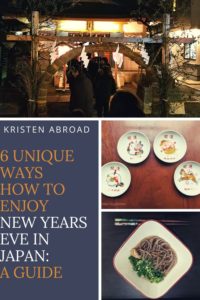
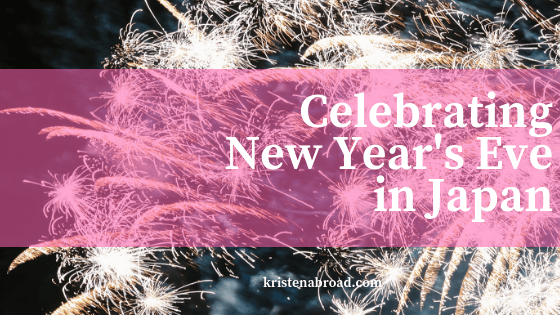
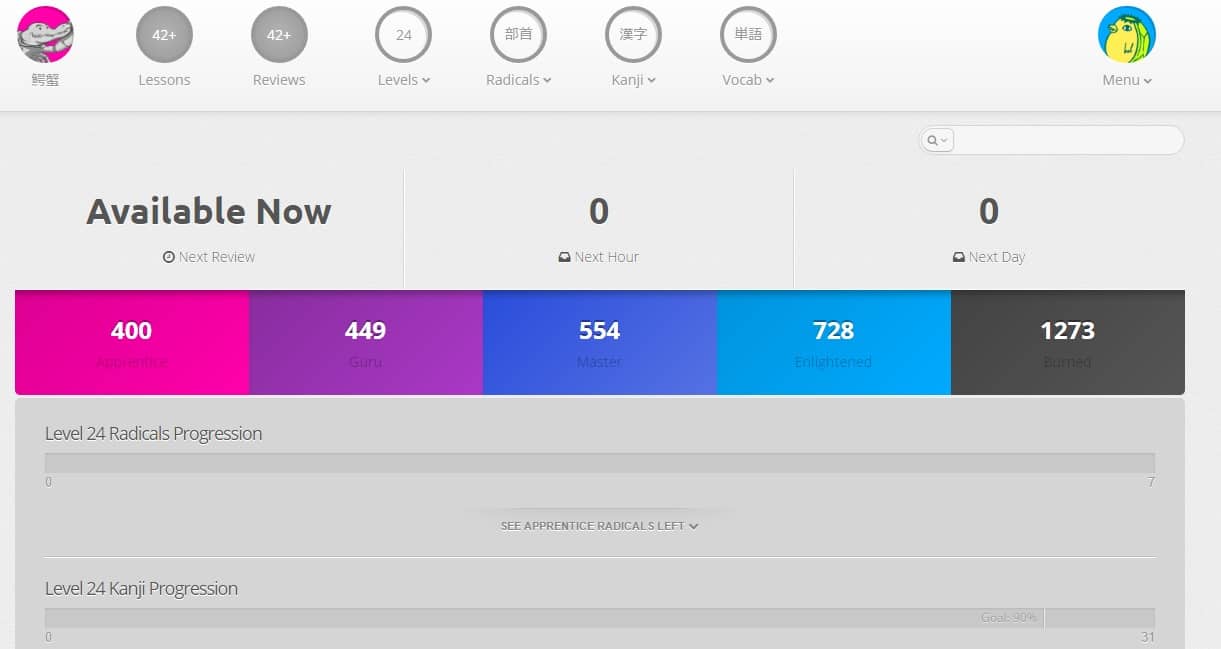
I love hearing about how other cultures celebrate, it’s so fascinating! I must admit, I hate spending NYE in England so I always try to go abroad over the new year period. I’ll have to put Japan on my list 🙂
Now I’m curious, what do I need to avoid in England for NYE?! LOL. I was contemplating going down to Sydney this year for NYE but I love the culture here for it — and I have to get my little sake plate!
Can’t wait to hear how you like NYE in Japan :).
Going out! Haha! You wait hours for a drink, everywhere is ticket entry only, its super crowded everywhere… Oh gosh I hate it!
LOL. Wow, no thanks on the waiting hours for a drink and I hate ticket entries!
Omg this is so interesting!! I did not know the story behind soba noodles, I love little tidbits like that. And I love the word ‘Hatsuhinode’ and its definition!!! So excited to have found your page. Liked and following!
I try and make sure there’s always something informative, glad you enjoyed :). And I’m happy you found it too, thank you so much for following, you just made my day!
Thanks for the tips I land in Tokyo on The 31st of this year and hope to be able to get in to Tokyo in time to try to do some of the New Years traditions!
That’s awesome!! How long are you going to be in Japan?! Great time to experience it. Would love to hear how your trip goes.
I am going to be in Japan for 42 days. Most of
the time in Tokyo but have plans for Sapporo, Hiroshima, Kyoto, and Osaka. This will be my first trip to Japan!
First trip and you get 42 days, that’s brilliant! Will you be in Sapporo for the snow festival by chance? Try and hit the other ones as well (I’m currently trying to finalize a post on them!) And Otaru (also a post) is super cute.
I do plan on being at the snow festival for the first week in February. That’s is one of the main things I planned my trip around.
It’s super fun. I went the past two years. Great choice 👍.
Where is the small shrine in Shubuya? We will be there this year and looking for a smaller one to go to. Thanks!
We go to 穏田神社 (Onden Shrine). It’s really cute and the amazake is amazing.
And made it to Tokyo with a few hours to spare!
Yay! Can’t wait to hear about your trip!